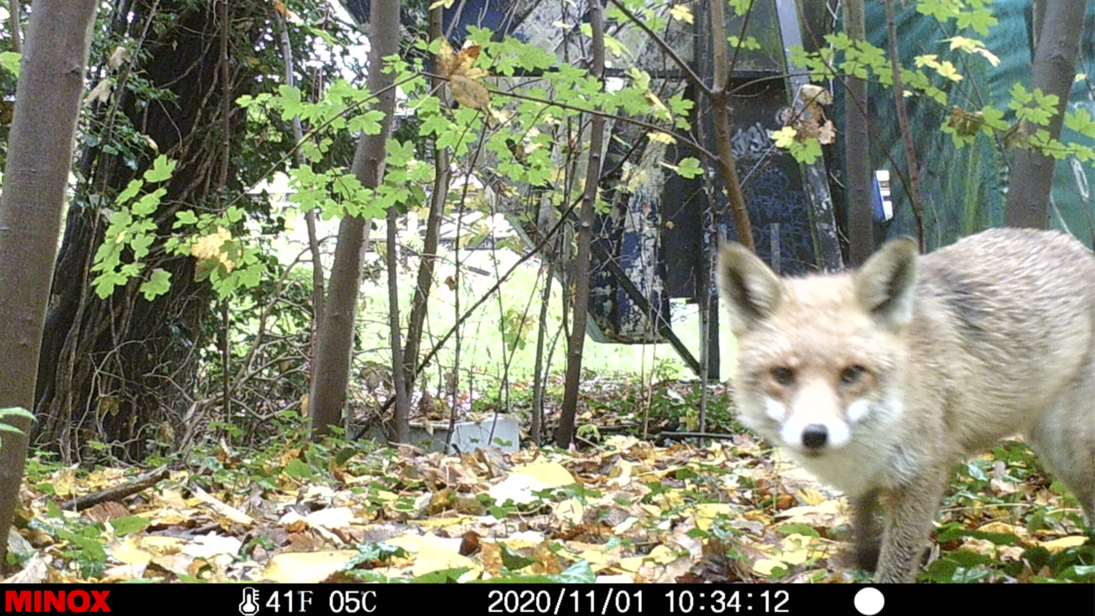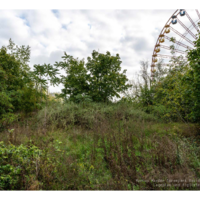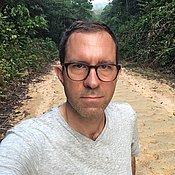
How the Urban Wilderness of the Spreepark Sounds
Marcus Maeder is both artist and acoustic ecologist. Merging in his work, art and science, and vice versa. Acoustic investigation and observation of biodiversity are at the heart of these two fields of research. That this can lead to new solutions and perspectives for the challenges posed by a project such as the Spreepark was demonstrated during his time as the second Spreepark Art Space research artist in residence.
A Coexistence of Humans and Animals
During his research, Maeder distributed four recorders and cameras with varying sound qualities at several locations throughout the park. Some are known to be more frequented by people, while other spots sound particularly beautiful when it rains, or where birdlife has taken over the reins. Maeder observes the park and its inhabitants just like a wildlife biologist that takes into consideration all inhabitants: Humans as well as animals. Thanks to the new environment created by the " fenced-in urban wilderness" of the Spreepark, a series of new forms of coexistence and cohabitation, is emerging. Fittingly, an exhibition of the same name was presented by the architecture magazine Arch+, featuring, among other things, the Spreepark as a site of investigation, where the various forms of cohabitation between humans and animals were explored. After all, questions regarding the coming together of nature and urban space will inevitably be revisited, particularly in the future.
A Complex Tapestry of Sound
Maeder's four recorders were in part placed at a considerable distance from one another, resulting in a soundscape joining places audibly that would otherwise be acoustically separated. The sounds that Maeder has brought together would not be audible if one were simply to stand in the park. Through the recordings, the terrain is compacted. "A spatial and temporal compression takes place," he explains. In other words, the recorders capture audio at intervals. Five minutes every hour, at four locations. The result is a complex tapestry of sound that allows visitors to discover the various species that populate the park, the times at which they are most active, and which of these are the loudest.
Cityscape and Landscape
The contradiction between wilderness and city life is what truly intrigues Maeder. While a fox appears every night, the sound of the leaves is occasionally accompanied by the hum of a helicopter, and the steady buzz of the street looms over everything. He is particularly fond of the barges that regularly dock on the banks of the Spree to unload sand or cement: "They drag along the quay, producing very long-drawn-out sounds. Naturally, this also echoes throughout the Spreepark. It's really neat," he says. His motivation: "I'm much more interested in contrasting landscapes than in depicting a natural oasis simply because you will hear new and interesting interactions there. For example, some bird species have adapted their songs to the urban police sirens."
Daytime Strollers and Raccoons
This kind of recording was also captured by a device installed at the former Spreeblitz roller coaster. With the area heavily frequented, both the camera and recorder were able to pick up a wide range of species. This extends from strollers to art students and hip-hop enthusiasts. At night, a raccoon regularly toddles by, closely followed by a fox that peers inquisitively into the camera.
Maeder tries to select locations that reflect every aspect of the landscape: " At the very centre a recorder was placed on the small island, in the abandoned lake near the former Ferris wheel. A place that is rarely visited by people, because visitors can't easily reach it. There were, however, a lot of birds that sat on the branches and "played" with the recorder. Despite the relatively small area, the result is a wide variety of sounds. A recorder was also installed at the boathouse of the former whitewater ride. The location proved particularly interesting for Maeder as the recorder was protected against wind and rain by a canopy, yet the building is completely open, making it easy to hear what's happening outside without rain hitting the microphone and disrupting the sound. Traffic is the one sound that is always there, omnipresent throughout the park. Alongside the above-ground recordings, Maeder also captured underground movements.
From Top to Bottom
Typically, acoustic observations of biodiversity tend to stay on the surface. One examines the number of different sounds and concludes how diverse the species are. Maeder, however, has taken this method underground.
An earthworm, for example, eagerly pushes itself forward amid, if amplified, deafening noise, wave-like and bristling with barbs. "When you hear that noise at full volume," Maeder says, "it's mind-boggling." Animals that are actually thought to be silent suddenly become acoustically tangible. Despite working as a scientist, Maeder always views his research from an artistic perspective, often yielding astonishing results. As a sound artist, he says, you automatically ask yourself as you stand around listening with a microphone, "What are the social implications of this? And what are the ecological implications audible in an acoustic environment?" as he explains the connection between art and science.
An Acoustic Archive
Soon, the results of this research will be incorporated in the further development of the Spreepark Art Space as part of an initial bioacoustic recording. It is precisely this process that makes artistic research so significant: the crossing of disciplinary boundaries, in which one influences the other, thus broadening the perspective and resulting in something entirely new. Some of the recordings, however, can already be heard on Spreepark Radio. Here you can hear the various sounds of the park at any possible (and impossible) time of the day. Some of them will certainly surprise you.
As the Spreepark continues to evolve in the years to come, Marcus Maeder's sound archive will accompany the transformation with its year of captured evolution. Therefore, one will not only be able to see the future changes visually but also understand them acoustically.







